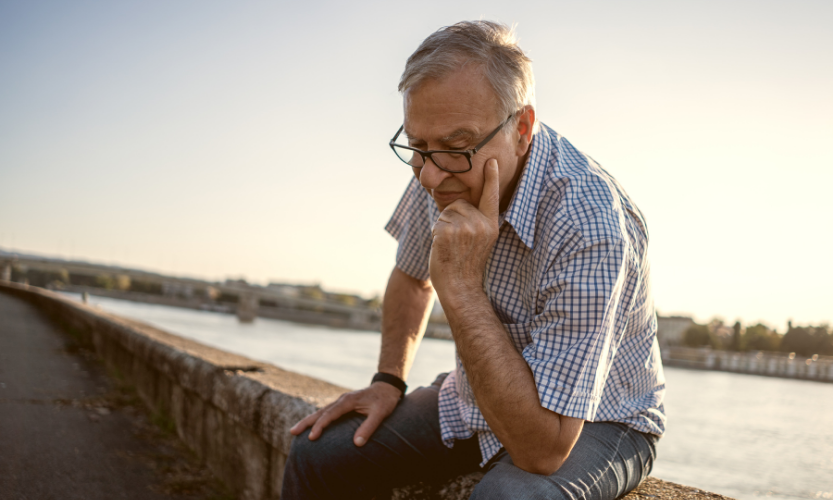I was talking to a dear friend of mine recently, and she was feeling low. She tried to hide her sadness and tears, but it was ME…her BFF…so she opened-up and shared her emotions freely, as best friends should.
I know my friend is grieving numerous losses. Her father took his own life in 2010, at the age of 79. She lost her Mom to cancer in 2013. Her only brother drowned in 2018, and, to literally add insult to injury, her husband of 16 years suddenly divorced her to begin a new life in another town with one of her so-called “friends,” shortly after her brother’s death.
My friend is grieving many life traumas, but the fact her Dad shot himself in the head three days after her birthday, while sitting in his easy chair in the family home he shared with his wife of more than 40 years, continues to torment her.
The reasons behind her Dad’s suicide are still quite murky. I can honestly tell you, though, that the grief my friend is experiencing over the loss of her sweet Daddy more than a decade ago is still very real and painful, as she continues to wonder why he chose such a dire, permanent solution as suicide.
Suicide among seniors is more prevalent than you might think. Watching the evening news recently drove home the point that tumultuous times can lead to mental health breakdowns for people of any age, but most prominently, our lonely, isolated seniors. The pandemic has only served to make this situation worse for the elderly population, and suicide statistics are on the rise.
Considering September is National Suicide Awareness Month, it’s important we explore some ways we can identify warning signs and proactively intervene to help prevent senior suicides.
The Suicide Prevention and Resource Center (SPRC) has published these facts:
“Suicide is an important problem among older adults. Suicide rates are particularly high among older men, with men ages 85 and older having the highest rate of any group in the country. Suicide attempts by older adults are much more likely to result in death than among younger persons,” because older adults put more thought into the process and methods to successfully kill themselves; they are less likely to be discovered and rescued; and their overall physical conditions render them less likely to survive a suicide attempt.
SPRC continued, “Suicide prevention efforts seek to reduce risk factors for suicide and strengthen the factors that protect individuals from suicide.”
The risk factors involved that can prompt seniors to contemplate and attempt suicide include:
- Depression and other mental health problems
- Substance use problems, including prescription medications
- Physical illness, disability, and pain
- Social isolation
“Research has consistently shown that loneliness and social isolation have profound negative effects on health, mental health, and mortality, particularly for older adults. In fact, the mortality risk of loneliness is comparable to smoking 15 cigarettes per day. Lonely people are 50% more likely to die prematurely,” a SPRC fact sheet on loneliness and isolation among the elderly states.
Loneliness and isolation among seniors has been exponentially exacerbated by the pandemic.
According to SPRC, “Although the true effects of COVID-19 on suicide are not yet known, increases in suicide are expected. There have been anecdotal reports of spikes in suicidal behaviors among older adults during the initial phase of the pandemic, and significant increases in suicide occurred during previous pandemics.”
Some of the risk factors associated with the effects of the COVID-19 pandemic mirror those for suicide later in life:
- Social: Living alone, social isolation, loneliness, lack of belonging, sense of being a burden to others
- Emotional: Depression, hopelessness, prolonged stress and anxiety, triggering of prior trauma/post-traumatic stress disorder (PTSD), substance use disorders
- Physical: Declining health and disability, chronic pain, insomnia
- Financial/Employment: Economic uncertainty and insecurity due to reduced income or retirement savings, job loss
- Environmental: Increased access to lethal means (e.g., firearms, medication)
If you recognize any of these risk factors in yourself or someone you love, and thoughts of suicide are becoming more prevalent, there are people ready to help at 1-800-273-TALK [8255].
Additionally, there are other ways we can do to help protect seniors from thinking about or attempting suicide, and these include:
- Providing care for mental and physical health problems
- Promoting social connectivity
- Applying skills in coping and adapting to change
Sometimes, a little tender loving care can go a long way to making life easier and more fulfilling for seniors. My team of compassionate caregivers at Home Helpers® Clearwater are available 24/7/365, to provide companionship, social engagement, assistance with personal care, meal preparation, light housekeeping, transportation to/from doctor appointments, and so much more.
I gladly offer a FREE Consultation to get to know you, assess your specific needs and create a comprehensive in-home care plan to help improve your quality of life and make your life easier and much more enjoyable!
We, at Home Helpers® Clearwater, are honored to have received the Home Care Pulse – Best of Home Care® Provider of Choice Award in 2017, 2018, 2019, 2020 & 2021. We proudly serve male and female seniors in Clearwater, Dunedin, Palm Harbor, Safety Harbor, Tarpon Springs, Holiday, New Port Richey, Trinity, Port Richey, Hudson and surrounding areas. Home Helpers®…we are Making Life Easier℠ 727.942.2539
Sources:
Suicide Prevention and Resource Center
SPRC Resource: Reducing Loneliness and Social Isolation among Older Adults
SPRC Resource: Promoting Psychological Health and Suicide Prevention among Older Adults during COVID-19

